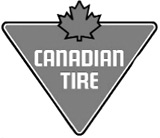Canadian identity found in old, dusty magazines
Every now and then we all run across old magazines or catalogues at our parents or grandparents place. But usually, after a quick glace and a couple flip-throughs at most, we relegate them to the recycling bin.
But to Dale Miller, a marketing professor at Fanshawe's Australian sister school, Griffith University, these catalogues detail the companies history, and one Canadian company in particular has caught her attention- Canadian Tire.
 “I'm particularly interested in is how branding and innovation are used in companies,” said Miller. “That's a corporate reputation, so I was interested in how they developed this unique identity.”
“I'm particularly interested in is how branding and innovation are used in companies,” said Miller. “That's a corporate reputation, so I was interested in how they developed this unique identity.”
With help from university archivists at the University of Western Ontario, Miller was granted access to the Universities Canadian Tire archives for six months, archives that consisted predominantly of 85-years of catalogues.
“When you look at the catalogues they are very clear about needing to have some identity,” Miller explained regarding the company's approach to marketing themselves in the early stages. “They used the phrase ‘Save safely and you can make your dollar run further with Canadian Tire,' so they were about offering consistent, well-priced merchandise.”
“They had a very clear idea of what their own identity was, and that helped them in all the decisions they made about the merchandise and services that they offered.”
As a professor in Australia it seems odd that Miller would be drawn to a Canadian company based half a world away. But to Miller, who has been coming to Canada since 1994, it didn't seem at all out of blue.
“I was very interested in the similarities and differences between Canada and Australia,” Miller said. “In 1997-98 I was here for a year, so I got to experience Canadian Tire, first off as a consumer, [and] then I gradually built up a network of Canadian colleagues and people who knew I was interested in retail history.”
From there it made sense to the professor in Miller to continue to research the company, if only to create a lesson plan her Canadian students could relate to. However, the more she looked into the company, the more it began to fascinate the scholar.
“It's fascinating to look at materials from the 1930's and look at material from today and see that there are a lot of similarities,” Miller explained. “So it emphasizes its Canadian-ness, which I think is very important to Canadian people. That seems to be at the heart of it, the ‘We are Canadian,' particularly now when other iconic retailers have been bought by Americans, it's very important to Canadians that Canadian Tire is still ours, despite the fact that it's a public company.”
“They've emphasized their Canadian-ness, they've emphasized their value, they've emphasized I think a type of self-sufficiency that seems to fit the Canadian psyche.”
And that self-sufficiency is what the company used to set themselves apart. In the 1930's cars were just becoming mainstream, and the company began marketing themselves as the place to go for the do-it-yourself owners, with the emphasis on the ability to maintain ones own car. And through the years Canadian Tire's approach hasn't deviated much.
Fanshawe and Griffith University operate as sister institutions, making student transfer between the two post-secondary schools easily available.













